Are you looking to start backyard vegetable gardening in the Philippines? You’re in luck! This article will guide you through gardening from January to April, including what vegetables to plant in the rainy season in the Philippines. Whether you are interested in backyard gardening in the Philippines for vegetables or flowers, we’ve got you covered.
Wondering which vegetables grow in which month? Or what vegetables can be harvested in 30 days in the Philippines? Look no further. We’ll also discuss easy-to-grow vegetables in pots in the Philippines. Let’s dive into our month-by-month guide to help you maximize your gardening experience.
Month-by-Month Gardening in the Philippines
January Gardening in the Philippines: Preparing the Soil for Planting
January is the perfect time to prepare your soil for planting. Since the Philippines has a warm climate year-round, you can grow various vegetables. Start by cleaning the area where you want to set up your garden. Remove all the weeds and rocks. Then, mix in organic matter like compost to enrich the soil.

This is essential for vegetables like carrots and tomatoes that need nutrient-rich soil. Proper soil preparation will also help in growing flowers like roses and sunflowers. If you are new to gardening and looking for what vegetables grow in the Philippines, start with fast-growing ones like radishes or mustard greens. They can be harvested in 30 days and are great for first-time gardeners.
February Gardening in the Philippines: Starting Seeds Indoors
The month of February is ideal for starting seeds indoors. Vegetables like peppers, eggplants, and tomatoes benefit from a head start inside the house. You can plant the seeds about an inch deep in small pots or seed trays filled with soil. Ensure to water them regularly but not too much, as excessive water can lead to rot.
In case you missed it: Seaweed Farming in the Philippines: Best Practices and Techniques
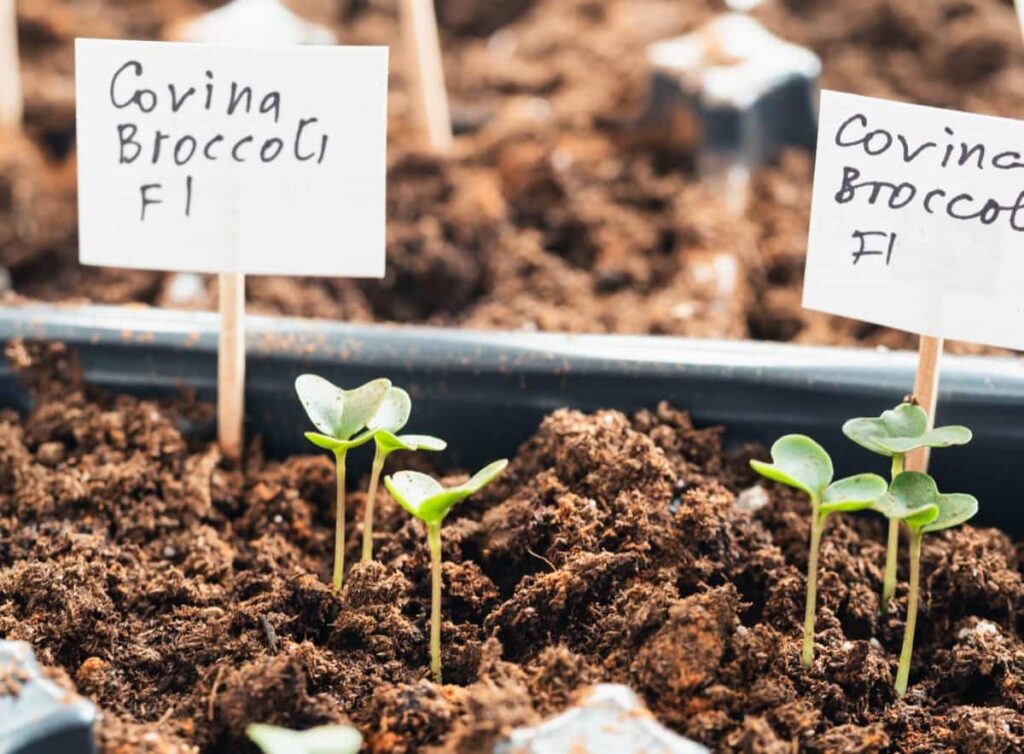
When it comes to flowers, start with sunflowers, marigolds, or daisies, as they are easier to grow. If you’re into backyard vegetable gardening in the Philippines, consider using a sunny windowsill for this growth stage. Using pots? No worries. There are many easy-to-grow vegetables in pots in the Philippines, like spinach and lettuce.
March Gardening in the Philippines: Transplanting Seedlings
March is when you should start transplanting seedlings. By now, the seeds you started indoors should be strong enough to be moved outside. Carefully uproot the young plants and transplant them into your prepared garden soil or pots. For vegetables like lettuce or cabbage that you might want to harvest quickly, consider planting them in areas where they can get at least 6 hours of sunlight.
In case you missed it: Catfish Farming in the Philippines: A Profitable Comprehensive Guide
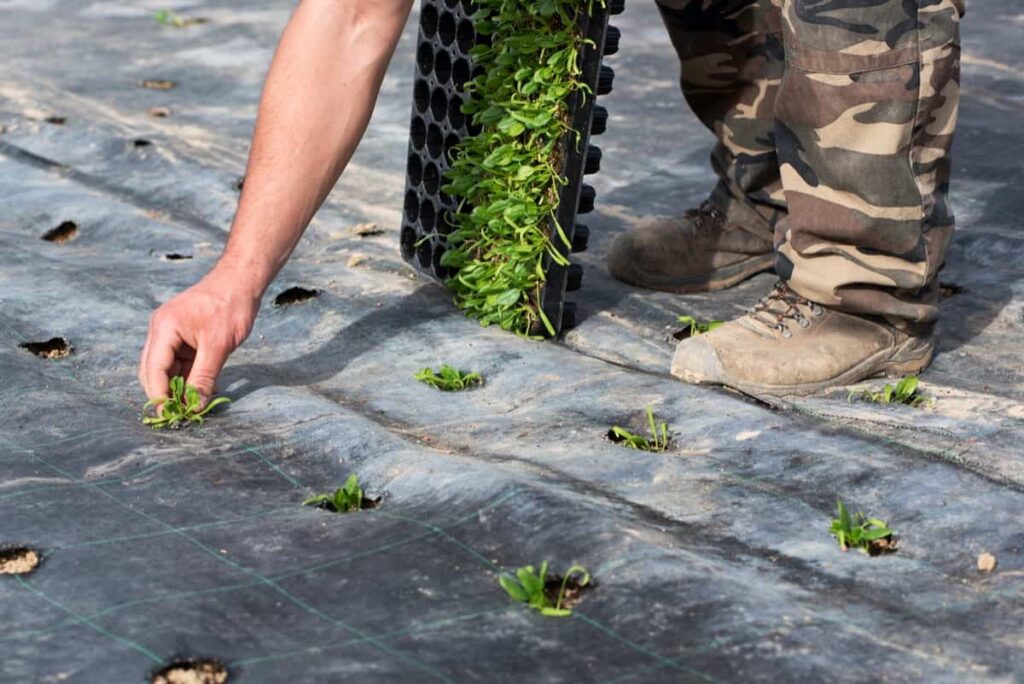
Flowers like roses and tulips also do well when transplanted in March. If you’re wondering what vegetables to plant in the rainy season in the Philippines, consider leafy greens like kale and arugula, as they thrive in cooler, wet conditions.
April Gardening in the Philippines: Sowing Directly in the Garden
April is the month for direct sowing. Now that the soil is all set and some plants are already in place, you can directly sow seeds for vegetables like okra, squash, and beans. These grow well in the Philippine climate and don’t require a head start indoors. If you’re into flower gardening, consider planting petunias, pansies, or snapdragons directly into the soil.
They add color and vibrancy to any garden. Regarding what vegetables can be harvested in 30 days in the Philippines, turnips and mustard greens are a good choice for April. They grow fast and are quite hardy, making them ideal for any gardening enthusiast, from beginners to experts.
May Gardening in the Philippines: Watering and Mulching
May is crucial for setting up a proper watering and mulching routine in your garden. The Philippines can get pretty hot and humid, so ensuring your plants are well-hydrated is vital. Most vegetables, including tomatoes and eggplants, prefer deep but infrequent watering, which helps their roots grow strong and deep. At the same time, flowers like roses and daisies also require a good amount of moisture but don’t like waterlogging, so be careful not to overwater.
Mulching is another important task for May. Organic mulch like straw or compost can help keep the soil moist and make it harder for weeds to grow. Suppose you’re into backyard vegetable gardening in the Philippines. In that case, mulching can also help keep soil-borne diseases at bay and improve soil structure, making it easier for plant roots to expand.
June Gardening in the Philippines: Protecting Plants from Heat Stress
Protecting your plants from heat stress in June becomes essential as temperatures rise. Whether you are into flower gardening or backyard vegetable gardening in the Philippines, you must take steps to help your plants cope with the heat. Consider installing shade cloths or umbrellas over more delicate vegetables and flowers during the hottest parts of the day.
Water your plants early or late in the afternoon to minimize water loss through evaporation. For potted plants or easy-to-grow vegetables in pots in the Philippines, ensure your containers are not overheating, as this can harm the roots and, ultimately, the entire plant.
July Gardening in the Philippines: Pruning and Deadheading
July is the time to focus on pruning and deadheading to help your plants grow stronger and produce more. Pin the tips for vegetables like tomatoes and peppers to encourage bushier growth and higher yields. You should remove any dead or yellow leaves to make room for new growth. For flowers, deadheading or removing faded flowers will help to extend the blooming period.
This is particularly helpful for flowers like roses and daisies with multiple blooming cycles. If you’re wondering what vegetables to plant in the rainy season in the Philippines, July is a good time to start with vegetables like cauliflower and broccoli that can handle a bit of extra moisture.
August Gardening in the Philippines: Fertilizing and Pest Control
August is an ideal month for fertilizing and focusing on pest control. By this time, the plants you’ve been carefully tending since January likely need a nutritional boost. Organic fertilizers like compost tea or worm castings are excellent choices for vegetables like lettuce, carrots, and flowers.
In case you missed it: How to Grow Lettuce and Salad Mix in Hydroponics: A Step-by-Step Guide
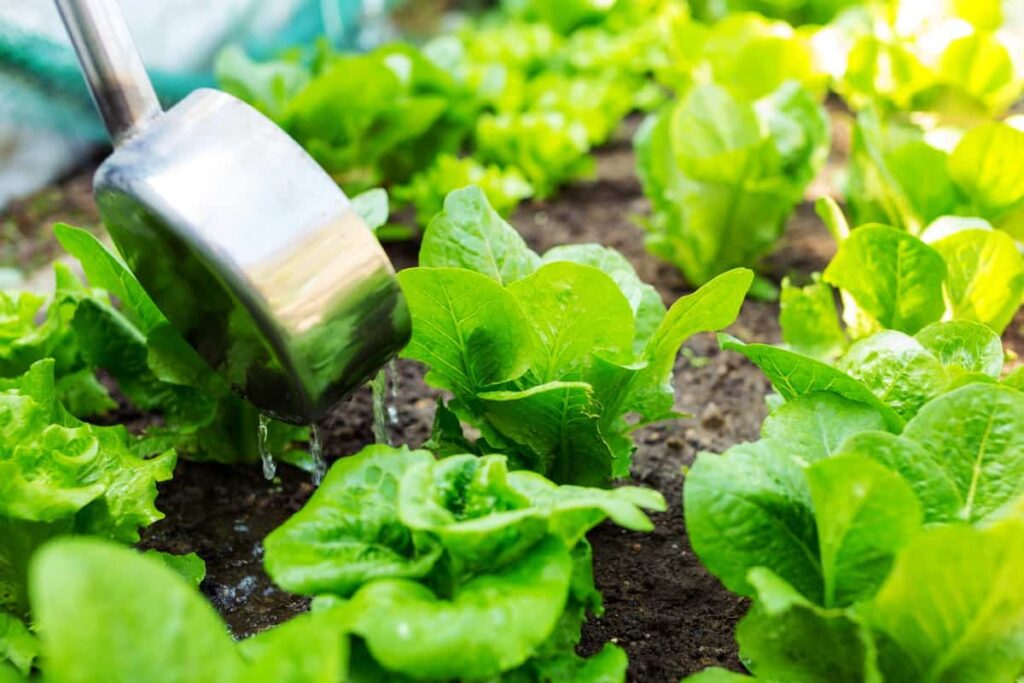
Regarding pest control, look for common garden pests like aphids and caterpillars. You can spray on affected plants with homemade solutions like water and dish soap. Suppose you’re into backyard vegetable gardening in the Philippines. In that case, you’ll want to pay special attention to common vegetable pests like cabbage and tomato hornworms and take the necessary steps to protect your harvest.
September Gardening in the Philippines: Harvesting Vegetables
September is often when the hard work you’ve put into your garden starts to pay off, as many vegetables become ready for harvesting. Depending on what you planted earlier in the year, you could pick tomatoes, okra, or root vegetables like carrots and radishes. If you’ve planted fast-growing vegetables like mustard greens or radishes, you may be harvesting these for the second or third time.
Use clean and sharp tools when harvesting to avoid damaging the plant or the produce. Properly storing your harvested vegetables is equally important. For those into backyard vegetable gardening in the Philippines, the sense of satisfaction from picking your homegrown produce can be immensely rewarding.
October Gardening in the Philippines: Planting Cool-Season Crops
October marks the onset of cooler weather, making it a good time to plant cool-season crops. In the Philippines, vegetables like cabbage, broccoli, and cauliflower can be planted during this time, as they thrive in cooler temperatures. If you’re into flower gardening, consider adding pansies or snapdragons, as they also prefer the cooler weather.
In case you missed it: Effective Strategies for Managing Insect Pests in Cabbage: A Guide for Farmers and Gardeners
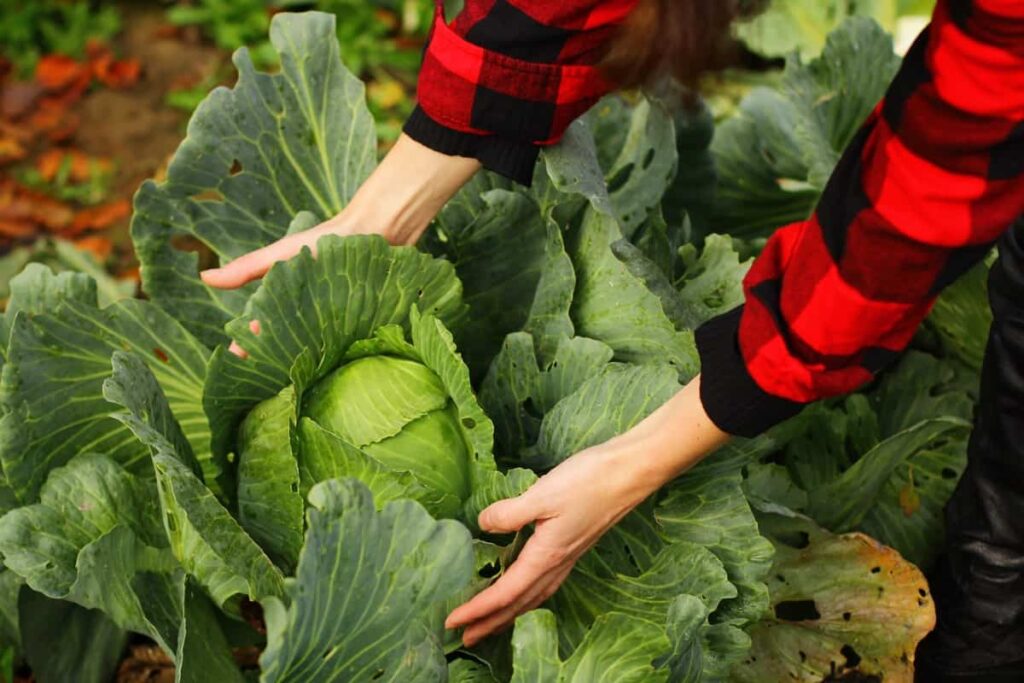
Even if you’ve opted for easy-to-grow vegetables in pots in the Philippines, these cool-season crops are highly adaptable and can do well in containers. October provides a second wind for your garden, allowing you to grow and harvest well into the cooler months.
November Gardening in the Philippines: Protecting Plants from Heavy Rains
November in the Philippines is often marked by heavier rains, so safeguarding your plants from excess water becomes crucial. If you have planted vegetables or flowers in low-lying areas, consider relocating them to higher ground or using raised beds. Proper drainage is vital, especially for vegetables like carrots and tomatoes that don’t like waterlogged conditions.
You can also use tarpaulin or large umbrellas to shield your plants during intense downpours. If you’re still wondering what vegetables to plant in the rainy season in the Philippines, consider leafy greens like spinach and Swiss chard that can tolerate wet conditions better than most.
December Gardening in the Philippines: Planning for the Next Year
As the year ends, December is the perfect month for reflection and planning for the next year. Take inventory of what worked and what didn’t in your garden. Did some plants struggle more than others? Were there particularly troublesome pests? List what plants you want to grow in the coming year and start preparing your seed orders. Consider rotating crops to prevent soil depletion and to keep pests at bay. December is also a good time to clean, repair, and store your gardening tools so they are ready for the next planting season.
Repairing and Maintaining Garden Infrastructure: Tools, Beds, and Irrigation Systems
This step focuses on the often overlooked but vital aspect of gardening: maintaining and repairing the garden’s infrastructure. Whether you’re into backyard gardening in the Philippines or more specialized gardening, taking time to assess the condition of your tools, garden beds, and irrigation systems is crucial. This step is best done twice yearly: at the start of the gardening season and again as it winds down.
Check for any rust on your gardening tools and consider sharpening them. Inspect your garden beds for any signs of wear and tear, and repair or replace timbers as needed. Test your irrigation system to ensure it’s in working order, and clean or replace any clogged sprinkler heads.
Soil Testing and Amending: Understanding and Nourishing Your Garden’s Foundation
Your soil is the foundation of your garden, and knowing its composition and nutrient levels can guide you in choosing the best fertilizers and amendments. Soil testing kits allow you to determine your soil’s pH level and nutrient content. Conduct this test at least once a year, typically at the beginning of the growing season.
In case you missed it: The Importance of Soil Health in Farming: Role of Soil in Sustainable Agriculture
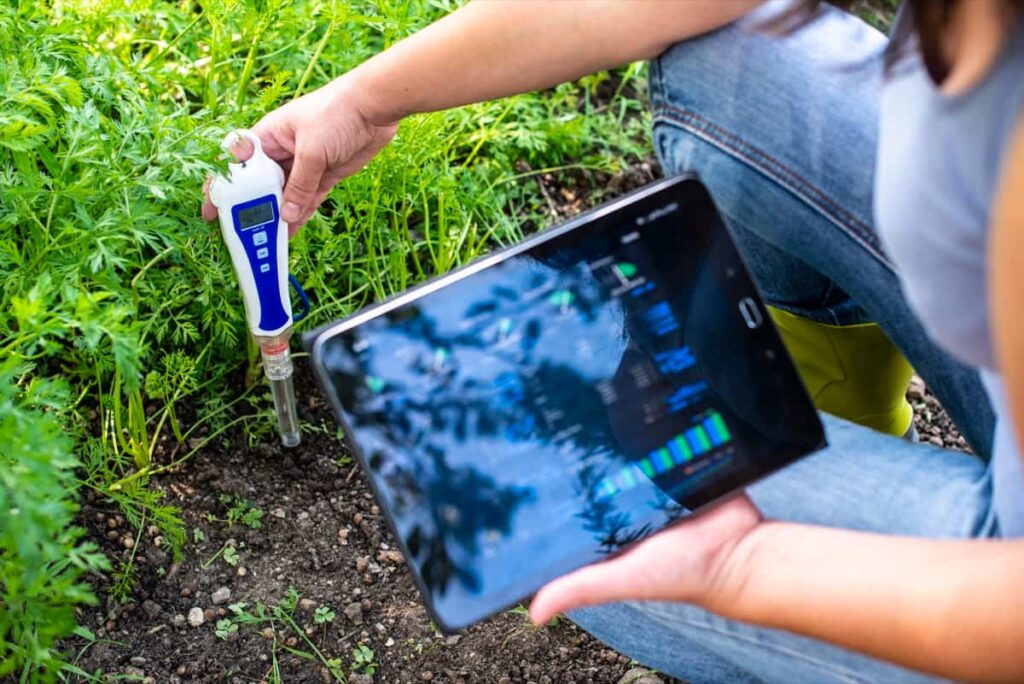
Once you have the results, you can tailor your fertilization and soil amendment practices to meet the specific needs of your plants. Adding lime can help balance the pH if your soil is too acidic. If it lacks essential nutrients like nitrogen or potassium, consider adding organic compost or specific fertilizers to fill the gap.
Planting and Growing Calendar in the Philippines for Vegetables and Flowers
| Month | Vegetables to Plant | Flowers to Plant | Activities & Tips |
| January | Radish, Mustard Greens | Roses, Sunflowers | Prepare the soil, add compost |
| February | Peppers, Eggplants, Tomatoes | Sunflowers, Marigolds, Daisies | Start seeds indoors; use sunny windowsills for seed trays |
| March | Lettuce, Cabbage | Roses, Tulips | Transplant seedlings focus on areas with at least 6 hours of sunlight |
| April | Okra, Squash, Beans | Petunias, Pansies, Snapdragons | Sow seeds directly in the garden; fast-growing veggies are ideal |
| May | Tomatoes, Eggplants | Roses, Daisies | Set up a watering schedule, mulch the soil |
| June | Carrots, Beets | Lavender, Marigolds | Protect plants from heat stress; use shade cloths |
| July | Cauliflower, Broccoli | Pansies, Geraniums | Pruning and deadheading, remove faded flowers |
| August | Lettuce, Carrots | Zinnias, Cosmos | Fertilize plants, focus on pest control |
| September | Spinach, Radish | Orchids, Chrysanthemums | Harvest vegetables and store produce properly |
| October | Cabbage, Broccoli, Cauliflower | Pansies, Snapdragons | Plant cool-season crops, prepare for cooler months |
| November | Spinach, Swiss Chard | Daffodils, Tulips | Protect plants from heavy rains, ensure proper drainage |
| December | Garlic, Onions | Roses, Lilies | Plan for next year, clean and store tools, rotate crops |
Conclusion
The journey of gardening in the Philippines is filled with opportunities and rewards across the calendar year. Each month comes with unique activities and tasks, from soil preparation and seed planting to harvesting and planning for the future. Whether you’re keen on backyard vegetable gardening in the Philippines or have a passion for growing vibrant flowers, this month-by-month guide provides the essential steps to help you achieve a successful and fulfilling gardening experience.
Incorporating this knowledge into your gardening routine can make the difference between a good and great harvest. From understanding what vegetables grow in which month to knowing what can be harvested in 30 days or what to plant in the rainy season, this guide aims to equip you with the information you need. By attending to your garden’s needs throughout the year, you set the stage for a lush, productive space that feeds the body and nourishes the soul.
- Budget Friendly Sheep Shed Ideas: Cheap and Low-Cost Tips
- How Much Do Cattle Farmers Make: Revenue Streams in Cattle Farming
- Management Pests and Diseases in Your Cotton Field
- Sheep Farming Business Plan for Beginners
- Aquaponic Farming at Home: A Step-By-Step Guide
- Profitable Village Farming Business Ideas in 2024
- High-Yield Aquaculture: Fast-Growing Fish for Farming
- Effective Fish Pond Construction Techniques for Beginners
- Irrigation and Water Management in Pineapple Farming
- Blossom to Harvest: Mastering Flowering and Pollination in Papaya Farming
- Pig Fattening Essentials: From Selection to Sale for Beginners
- Raising Wagyu Cattle: A Complete Guide for Premium Beef Production
- Soil Types and Their Water Holding Capacity
- Optimizing Irrigation Schedules for Coconut Groves for Enhanced Yield
- Espresso Your Garden: Coffee Grounds for Healthier Acid-Loving Plants
- The Best Soil Mix for Snake Plants: How to Mix Your Own Snake Plant Soil
- Green Thumb Success: Expert Tips for Cultivating Greenhouse Beans All Year Round
- Bloom All Year Round: The Ultimate Guide to Indoor Hyacinth Care
- Eco-Friendly Gardening: How to Make Liquid Fertilizer from Kitchen Waste
- Ultimate Guide to Grow Anise in Pots: Explore Seed Propagation to Harvesting
- Guide to Raising Chester White Pigs: Discover Breed Facts to Growth Management
- Mastering the Elegance: The Ultimate Guide to Weeping Cherry Tree Care, Planting, and Maintenance
- Ultimate Guide to Planting Garlic in Grow Bags: Growing Strategies for Beginners
- How to Fix Spider Plant Leaf-Related Problems: Natural and Organic Remedies
- 10 Reasons Why Your Tulsi Plant is Shedding Leaves: Home Remedies and Solutions
- Optimizing Growth and Yield: The Advantages of Palm Bunch Ash Fertilizer
- Utilizing Neem Oil Extract as a Natural Pesticide for Hydrangea
- From Soil to Harvest: Various Ways in Which Farmers Can Use AI Tools
- Steps to Encourage and Induce Citrus Flowers: A Comprehensive Guide
- How to Fix Snake Plant Leaf-Related Issues: Natural and Organic Remedies
- Transform Your Garden into a Fragrant Oasis with Raat Ki Rani (Night Blooming Jasmine)
- Discover the Ideal Chicken Breeds for Philippine Farms
- How to Create a Poultry Egg Farm Business Plan for Profits
- Grow Lemon Cucumbers Like a Pro: Insider Techniques for Bountiful Yields
- Ultimate Guide to Caring for Your Pink Princess Philodendron: Tips for Thriving Variegation
- Areca Nut Profit Per Acre: Calculating Yield and Cost of Cultivation
